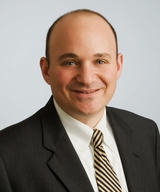Overview
On January 25, 2011, the Securities and Exchange Commission (the "SEC") proposed Rule 204(b)-1 under the Investment Advisers Act of 1940 (the "Advisers Act"), and on January 26, 2011, the Commodity Futures Trading Commission (the "CFTC") proposed Rule 4.27(d) under the Commodity Exchange Act. The Dodd-Frank Wall Street Reform and Consumer Protection Act (the "Dodd-Frank Act") required the SEC and CFTC to implement these rules in order to provide the Financial Stability Oversight Council (the "FSOC") with information necessary and appropriate to assess systemic risks.
As proposed, Rule 204(b)-1 will require advisers to hedge funds, private equity funds and "liquidity funds" (i.e., private money market funds) to periodically file new Form PF with the SEC. Form PF is lengthy (the entire form is 44 pages long) and requires detailed responses. The content and frequency of an adviser's reporting obligations on Form PF depend on the types of private funds advised and the adviser's assets under management ("AUM"). Hedge funds and liquidity funds would be subject to more disclosure than private equity funds. In addition "Large Private Fund Advisers" (advisers to funds with over $1 billion in AUM) would be subject to increased disclosure and quarterly filings. The CFTC proposed Forms CPO-PQR and CTA-PR to capture substantively identical information as Form PF.
Importantly, these new filing requirements will only apply to advisers registered with the SEC or CFTC. Accordingly, advisers relying on the venture capital exemption or the private fund adviser exemption would not be subject to Form PF filing requirements.1
This new filing requirement would be in addition to a registered adviser's reporting requirements pursuant to Form ADV. The SEC release can be found at http://www.sec.gov/rules/proposed/2011/ia-3145.pdf and the CFTC release can be found at http://www.cftc.gov/ucm/groups/public/@newsroom/documents/file/federalregister012611b.pdf.
Which Advisers Need To File Form PF?
Any investment adviser registered with the SEC that advises one or more private funds would be required to file Form PF."Private fund" is defined as a fund relying on an exemption found in Section 3(c)(1) or 3(c)(7) of the Investment Company Act of 1940. A Commodity Pool Operator ("CPO") or a Commodity Trading Adviser ("CTA") that is also an adviser registered with the SEC and that advises a private fund must file Form PF with respect to any commodity pool that is a private fund.If a registered adviser's principal office and place of business is outside the U.S., the adviser would be permitted to exclude from its filings any private fund that during the last fiscal year was neither (i) a U.S. person (as defined in proposed Advisers Act Rule 203(m)-1 (generally using a definition found in Regulation S of the Securities Act of 1933)) nor (ii) offered to, or beneficially owned by, U.S. persons.
Will The Information Provided To The SEC Be Kept Confidential?
The information reported on Form PF will generally not be made public. The Dodd-Frank Act specifically exempts the SEC and CFTC from being required to disclose to the public pursuant to a request under the Freedom of Information Act any information filed on Form PF.
Information on Form PF filed with the SEC would be made available to the CFTC (if the adviser is registered with the CFTC) and the FSOC. In addition, Form PF information would be made available if requested pursuant to a court order, by another federal department or agency or self-regulatory organization, or if requested by Congress. The SEC states in the proposed rule release for Rule 204(b)-1 that it would have the ability to use Form PF information in an enforcement action. Advisers should make sure that any information filed on Form PF is accurate and consistent with any marketing materials provided to investors.
How Often Must An Adviser File Form PF?
Generally, private fund advisers would be required to file these reports annually. However, Large Private Fund Advisers would be required to file reports quarterly.
When Would The New Rules Become Effective?
A Large Private Fund Adviser's first filing would be due January 15, 2012 (15 days after the end of the December 31, 2011 quarter). All other advisers would be required to file 90 days after their first fiscal year occurring on or after the compliance date (December 15, 2011). Therefore, a small adviser with a December 31 fiscal year would not be required to make the filing until March 31, 2012.
Could An Adviser File One Form For All Related Advisers?
Yes, the SEC specifically states that an adviser would be allowed to consolidate all related entities onto one form.
How Is The Form Organized?
The form has four basic sections. Section 1 would be completed by all registered advisers that advise private funds. Section 2 would be completed by Large Private Fund Advisers advising hedge funds.2Section 3 would be completed by Large Private Fund Advisers advising liquidity funds. Section 4 would be completed by Large Private Fund Advisers advising private equity funds. Advisers with both hedge and private equity funds may be required to complete multiple sections of the form.
How Are "Hedge Fund," "Liquidity Fund," "Private Equity Fund" And "Large Private Fund Adviser" Defined?
Hedge fund is defined as a private fund that: (i) pays a performance fee taking into account unrealized gains; (ii) may borrow an amount in excess of one-half of the fund's net asset value or may have gross notional exposure in excess of twice its net asset value; or (iii) may sell securities or other assets short.
Liquidity fund is defined as a fund that seeks to generate income by investing in a portfolio of short-term obligations in order to maintain a stable net asset value or minimize principal volatility for investors.
Private equity fund is defined in the negative as any private fund that is not a hedge fund, liquidity fund, real estate fund, securitized asset fund or venture capital fund and that does not ordinarily provide investors with redemption rights.
Large Private Fund Adviser is defined as: (i) an adviser managing hedge funds that have at least $1 billion in aggregate "regulatory AUM" (as defined in Form ADV, as recently revised) as of the close of business on any day during the most recently completed calendar quarter; (ii) an adviser managing a liquidity fund and having combined liquidity fund and registered money market fund regulatory AUM of at least $1 billion as of the close of business on any day during the most recently completed calendar quarter; or (iii) an adviser managing private equity funds that collectively have at least $1 billion in regulatory AUM as of the last day of the most recently completed calendar quarter.
For purposes of the $1 billion threshold test for Large Private Fund Advisers, each adviser would have to aggregate managed accounts advised by the adviser that pursue substantially the same investment objective and strategy and invest in substantially the same positions as the private fund and private fund assets advised by any of the adviser's "related persons."
Finally, although advisers to private funds investing in real estate would not be required to file the more detailed information in Form PF, they would be required to file the basic identifying disclosure.
More Specifically, What Information Is Required For Each Type Of Adviser?
Section 1a of Form PF requires basic identifying information about the adviser, as well as the adviser's gross and net AUM.
Section 1b requires for each private fund:
• The name of the fund;
• Gross and net assets;
• The name of and amount owed to each creditor to which the fund owes 5 percent or more of its net asset value;
• The number of beneficial owners of the fund's equity interests;
• The percentage of equity held by the five largest equity holders; and
• Monthly and quarterly performance information.
Section 1c requires each hedge fund adviser to report for each fund:
• The fund's investment strategies;
• The percentage of the fund's assets managed by trading algorithms; and
• The five biggest net trading counterparty exposures of the fund, and the five trading counterparties with the biggest net exposure to the fund.
Section 2a requires each Large Private Fund Adviser to hedge funds to report the following aggregate information about the hedge funds it advises:
• The market value of assets invested in securities and commodities broken down into different categories;
• The duration of fixed income instruments;
• The portfolio's turnover rate; and
• The geographic breakdown of the investments.
Section 2b requires any adviser to a hedge fund with $500 million in net asset value (including its parallel funds, other related funds in a master-feeder arrangement, and parallel separate accounts) to report additional information about each such fund, including:
• Dollar value of long and short positions;
• The fund's liquidity;
• Concentration of the fund's investments;
• The fund's collateral practices with significant trading parties;
• The name of the three central clearing counterparties to which the fund has the greatest net counterparty credit exposure;
• Value at risk;
• A monthly breakdown of the fund's secured and unsecured borrowing;
• Information concerning the fund's derivatives exposures;
• Types of creditors;
• Information about side pocket and gating arrangements; and
• A breakdown of outstanding investor lock-ups.
Section 3 requires Large Private Fund Advisers to liquidity funds to answer various questions concerning each fund, including:
• Valuation methods used by the fund;
• The fund's NAV per share;
• The weighted average maturity and weighted average life of the fund's portfolio;
• The fund's seven-day gross yield;
• The fund's daily and weekly liquid assets;
• The amount of assets with a maturity greater than 397 days;
• The breakdown of various financial instruments and the maturity of those instruments;
• Secured or unsecured borrowing (broken down by creditor type and maturity profile);
• Whether the fund has a committed liquidity facility;
• Concentration of the fund's investor base; and
• Gating and redemption policies.
Section 4 requires Large Private Fund Advisers to private equity funds to answer various questions concerning each fund, including:
• The outstanding amount of any fund borrowing and guarantees;
• The weighted average debt-to-equity ratio of controlled portfolio companies and the highest and lowest debt-to-equity ratios across controlled portfolio companies of the fund;
• A breakdown of the debt of controlled portfolio companies by maturity;
• The portion of controlled portfolio companies' debt that is payment-in-kind or zero coupon;
• Whether the fund or any of its controlled portfolio companies experienced an event of default on any debt during the reporting period;
• The identity of the banks providing bridge financing to controlled portfolio companies and the amount of that financing;
• The aggregate dollar amount of co-investments of the adviser's related persons in any of the fund's controlled portfolio companies;
• A breakdown of the fund's investments by industry and by geography; and
• Information regarding any financial industry portfolio company in which each private equity fund invests.
How Would Form PF Be Filed?
The SEC release says that this information will be disclosed later. The release does suggest that the existing Investment Adviser Registration Depository (IARD) system is being considered.
When Are Comments Due?
Comments to the rules are due within 60 days of publication in the Federal Register. 1 The SEC specifically states in the Form PF release that the reason why these advisers are being excluded is because such advisers would be required to file Part 1 of Form ADV pursuant to other recent SEC proposed rules.
2 As discussed above, Section 2b also would require any adviser to a hedge fund with $500 million in net asset value to fulfill certain reporting requirements.
Published February 28, 2011.





